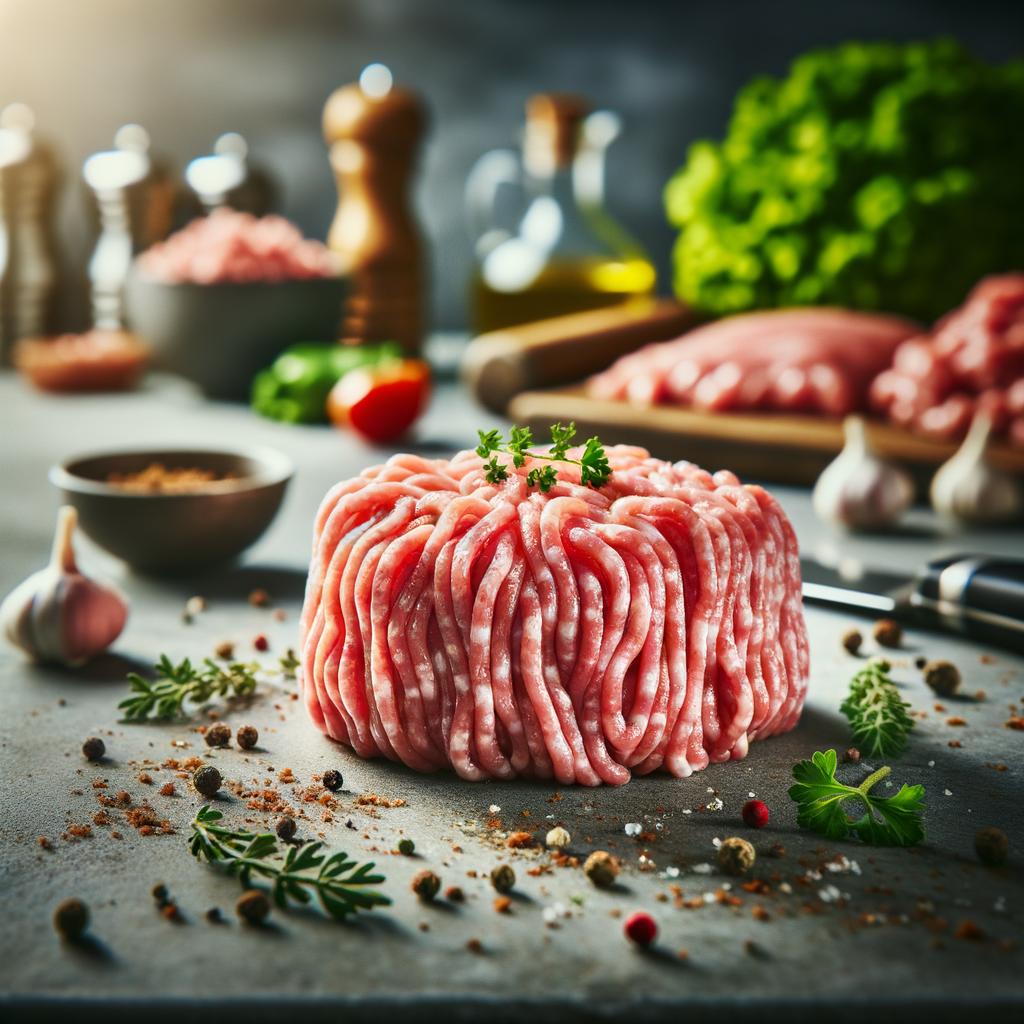Minced Lamb or Chicken

Description
Minced lamb or chicken is a versatile ingredient that holds a special place in the culinary world. The texture of minced meat is soft yet granular, providing a delightful contrast in many dishes. Minced lamb carries a rich, robust flavor, often described as gamey, and is darker in color compared to chicken. Minced chicken, on the other hand, is lighter in color, with a mild, slightly sweet flavor that easily adapts to various seasonings. Both are unique for their ability to absorb and enhance the flavors of the ingredients they're cooked with.
Primary Uses
Minced lamb and chicken are used extensively in a variety of cuisines worldwide. They're the heart of dishes like the Greek moussaka, Italian lasagna, Indian keema, and American meatloaf. They're also used in fillings for dumplings, pies, and tacos. In non-culinary uses, minced meat is often associated with festivals and communal celebrations, symbolizing abundance and togetherness.
History
The history of mincing meat can be traced back to the ancient times when meat had to be broken down without the use of modern kitchen tools. In the Middle East, minced lamb has been used in dishes like kofta and shawarma for centuries. Similarly, minced chicken has been a staple in Chinese cuisine since the Tang Dynasty. The use and popularity of minced meat have evolved over time, and today, it is an integral part of fast food culture. An interesting folklore associated with minced meat is the legend of the "Lamb of God", where lamb symbolizes innocence and purity in many cultures.
Nutritional Information
Minced lamb is a great source of protein, vitamins B12 and B6, zinc, and selenium. It's also high in saturated fat, so it should be consumed in moderation. Minced chicken, on the other hand, is leaner and lower in calories, making it a healthier choice. It's rich in protein, niacin, and vitamin B6. Both meats are excellent sources of essential amino acids necessary for bodily functions. While they share similar nutritional profiles, the choice between them often comes down to personal preference and dietary needs. As a food historian, chef, and nutritionist, I encourage you to enjoy both in moderation and explore the wide range of dishes they can create.

